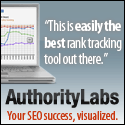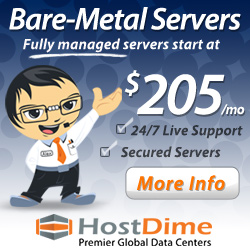This is a “back to the basics” type of entry as I wanted to deal with the fundamental elements that are involved in optimizing individual web pages, giving them a better chance to position well in the organic search results of engines such as Google, Yahoo, MSN and Ask. While each page of one’s site should be a candidate in targeting various phrases relevant to your business model, the fundamental elements of those pages that can be optimized always remain the same.
Before we get to those elements, a couple of preliminary steps that are just as important if not more so then the optimization effort itself.
So what is the very first step?
Keyword research! Without thorough keyword research, you could be targeting phrases that are entirely wrong for your business model as well as phrases that no one is actually searching for.
Most people involved in maintaining or marketing a company web site already have a general idea of what keywords searchers might query to find their business. The idea therefore is to back up their assumptions with real data and in the process discover additional keywords they might have missed.
There are two great tools to accomplish this. The first and my personal favorite is Keyword Discovery by Trellian. This keyword research tool compiles search statistics from over 180 search engines world wide. Wordtracker is another great tool and is currently the most well know keyword research tool on the market.
Both are subscription based, but well worth the price you pay. You can also use the free keyword research tool provided by Yahoo! Search Marketing but this won’t provide the extensive data that the other two products will.
Once you have developed a list of keyword phrases to target, the next preliminary step is to identify which pages on your site will support each phrase. Sometimes this may be an easy task while other times it may require quite a process. This is especially true if you are working on a client site where you are not completely familiar with the products and/or services or the structure of the site itself.
If you are having trouble identifying which pages coincide with specific keywords, trying searching the site with the “site” command (site:www.yoururl.com keyword phrase). This will often produce a list of pages from your site that may be good candidates for your list.
Now on to the elements of the page that can be optimized as well as some basic guidelines. In most cases there are only five elements of a web page that you need to optimize – 1.) Title Tags, 2.) Meta Description Tags, 3.) Page Copy, 4.) Alt Attributes and 5.) Anchor Text in Textual Links.
Title Tags
Title Tags are the most important element of optimizing a page. If you can do nothing else, optimize the title tag. There are various methods optimizers use but I generally like the following format:
<title>Keyword Phrase Here | Company or Website Name Here</title>
Some people like to have the company name first for branding purposes. Others leave it out altogether so they have more characters to work with. You generally have 64 characters to work with in a title tag before it may get cut off by an engine. That is not a hard and fast rule as each engine is different but it is what I follow.
I like to have the company name in the title tag because branding is very important to me. At any rate, try to avoid stuffing too many keywords into a title tag or using repetition of the same keywords over and over again. The key is to make sure your targeted phrase is in place but at the same time make sure your title attracts clicks from searchers.
Meta Description Tag
While many engines will actually use a snippet of text from your body copy to form the description that you see in the SERPs (search engine results pages), it does not hurt to write a description of the topic of the page. These can appear in the SERPs and engines do index them as well as factor them in their algorithms. They can also be useful when filling in description forms in directories or providing a well written description for someone who may be linking to that page from their site.
Body Copy
Most often a site will already have decent copy. The idea is to ensure your targeted phrases are represented in the copy but in a natural language.
In other words, don’t try to force a phrase in so often that your copy looks unnatural or just plain stupid. Your copy needs to be written to convert, educate, entice or whatever else your goal is. It needs to be written for your users. They are the ones that will end up supporting your business, not the search engines.
So the idea is to have effective copy that also represents your targeted phrases for that page. Don’t worry about keyword density formulas because they don’t exist. If they did, it would fluctuate every time because competition for positions in organic search is always going to vary. Depending on how much copy actually exists on a page, I try to make sure the phrase I am targeting is represented at least a few times. Avoid scenarios like this:
Our blue widgets are the best blue widgets in the blue widget industry. We offer big blue widgets as well as small blue widgets. We offer blue widgets in large quantities as well as small. When searching for blue widgets, you need to look no further because our blue widgets are the best blue widgets in the entire spectrum of blue widgets.
Have you had enough? Sounds stupid, doesn’t it. That’s because it is and it will turn off visitors faster then anything else you do.
Alt Attributes
Alt attributes, also commonly referred to as “alt tags” (although the wrong term for them) consist of the text that lies behind images or graphics. Search engine algorithms do take into count alt attributes behind linked images whereas they do not with images that are not linked.
While all of your images should have an alt attribute for usability’s sake, linked images should describe the page they are linking to while un-linked images should describe the image itself. So the optimization really comes into play with linked images. It is here that you can insert keywords that are relevant to the page they are linking to but keep it simple. Don’t use these as an opportunity to stuff an endless stream of keywords in there.
Anchor Text in Textual Links
Just as alt attributes in linked images can help an optimization effort, so can using targeted anchor text in textual links to other pages. Again a caution and that is when optimizing anchor text in textual links, keep your site visitors in mind. Make sure copy remains in a natural state.
What’s Left?
You may have noticed that I did not discuss the keyword meta tag, header tags, bold tags, etc. That is because they are not that important.
The keyword meta tag is pretty much useless. I still develop one for each site I work on but do not go through the effort of creating unique ones for each page. They can be good for representing common mis-spellings of keywords – that is if there is not a lot of competition out there for those same words. Google and MSN do not index them while Yahoo and Ask do. So, if you want to target a few mis-spelled words, better to do it here then in your copy.
Heading tags have never made that much of a difference. The same is true of bolding text. You can certainly employ these but do so again where it makes sense to do so and not just because you think it will help your rankings.
Well that’s all I have on this topic. Keep in mind that these are basic fundamentals. Each site and each page for that matter is different and as such can create unique scenarios. These are simply some fundamental things to keep in mind when optimizing individual web pages.
You might also like…








